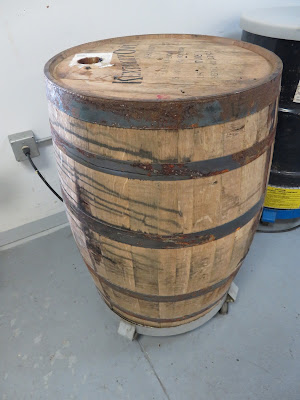 |
| Water Lilly's in Tate's Hell |
Tate’s Hell [April 10, 2023]
We have mentioned before that the Forgotten Coast is quiet
and relatively undeveloped with small towns and “Mom and Pop” businesses. Several of the reasons it isn’t developed like
the rest of the Florida Panhandle coastline are Apalachicola National Forest
and Tate’s Hell State Forest. Tate’s
Hell is more swamp than forest, and serves as a green buffer to the adjacent
bays and marshes.
Legend has it that Tate’s Hell gets its name from a local
farmer, Cebe Tate, who went into the swamp searching for a panther that was
killing his livestock. He got lost, was
bitten by a snake (species unspecified in the legend but they do have Coral
Snakes here), drank the swamp water, and wandered around the forest for
days. Finally, he came into a clearing
near Carrabelle and lived long enough to say “My name is Cebe Tate, and I just
came from Hell!”
In the middle of Tate’s Hell is a sizable grove of 300-hundred-year-old
Dwarf Cypress (sometimes called Hat Rack Cypress) trees that grow no more than 6-15
feet tall; most Cypress trees grow 50-80 feet tall. They say that the tree growth might be
stunted because of an underlying layer of clay and low-nutrient soil in that
area, but they aren’t really sure.
There is a boardwalk up to an observation platform where you
stand above the tallest tree and look out over the top of this interesting
grove.
Tate’s Hell is home to many wild animals, including bears
who are sometimes seen in town or along the road. Along our drive through the swamp to reach the Dwarf Cypress
grove we passed several banks of bee hives surrounded by electrified fences,
perhaps to keep out the bears? We had
heard that bee keepers in this area move their hives to locations when particular
trees are blooming. Perhaps that is what
we were seeing.
Wewahitchka [April 24, 2023]
Tupelo Honey is a delicious, rare and special honey made
from the nectar of flowering Tupelo trees.
This part of Florida is where most of the Tupelo Honey comes from. Tupelos live in swamps among Cypress trees. Beekeepers load their hives onto barges and float
them under the flowering trees. The Tupelo
blossoms are very fragile and are easily damaged by weather. Tupelo honey season can last for 3 weeks, or
just for a few days.
The center for Tupelo Honey-making is Wewahitchka, Florida a
few miles north of the smaller town of Honeyville. We visited the Smiley Honey Co. to learn more
about Tupelo Honey. They purchase raw honey
from the beekeepers and store it in large cans.
Then they pump the honey into a vat where it is warmed just enough to flow
freely (but not so hot as to kill the beneficial elements) through a filter and
into containers on a hand-operated machine.
Another employee manually affixes labels to the containers. Then the product is packaged to be mailed to you
the online purchaser.
Vintage 2020 Barrel Aged Tupelo Honey
The folks at Smiley Honey Co are experimenting with aging
Tupelo Honey in a retired bourbon whiskey barrel. They let us taste it out of the barrel (we
used clean spoons). It was delicious! We ordered some to be sent to us after it was
bottled at the end of the week. We are
open to suggestions of ways we can eat it…
We visited the Smiley Honey Co. a few days after the bees
were placed among the Tupelo trees.
Since then, we have had two days of heavy rain and two other days of
high winds. We hope the weather has not
adversely affected this year’s honey harvest.
You can find out more about the Smiley Honey Co by clicking here. They sell many types of honey in addition to
the Tupelo, as well as beauty aids created from beeswax.
Our campsite at Carrabelle Beach RV Resort
We have camped at Carrabelle Beach RV Resort for the past two weeks, across the street from a beautiful long white sand beach. Every morning, we take Schooner for long sunrise walks where she can swim, retrieve her fetching dummy, and run around on the empty beach. Here is a video of Schooner one beautiful morning.
Tomorrow we start our journey home. We’ve had a wonderful adventure these past 8
weeks. We started out wearing our winter
coats and gloves on the windy beaches of North Carolina and have finished up basking
in the hot Florida sun.
 |
| Cape San Blas bright white beach and green water |
 |
| Kayaking St. George State Park |
 |
| In case you ever wondered if pelicans drag their fingers in the water as they fly over |
























































